King Tejo of Goryeo Kingdom
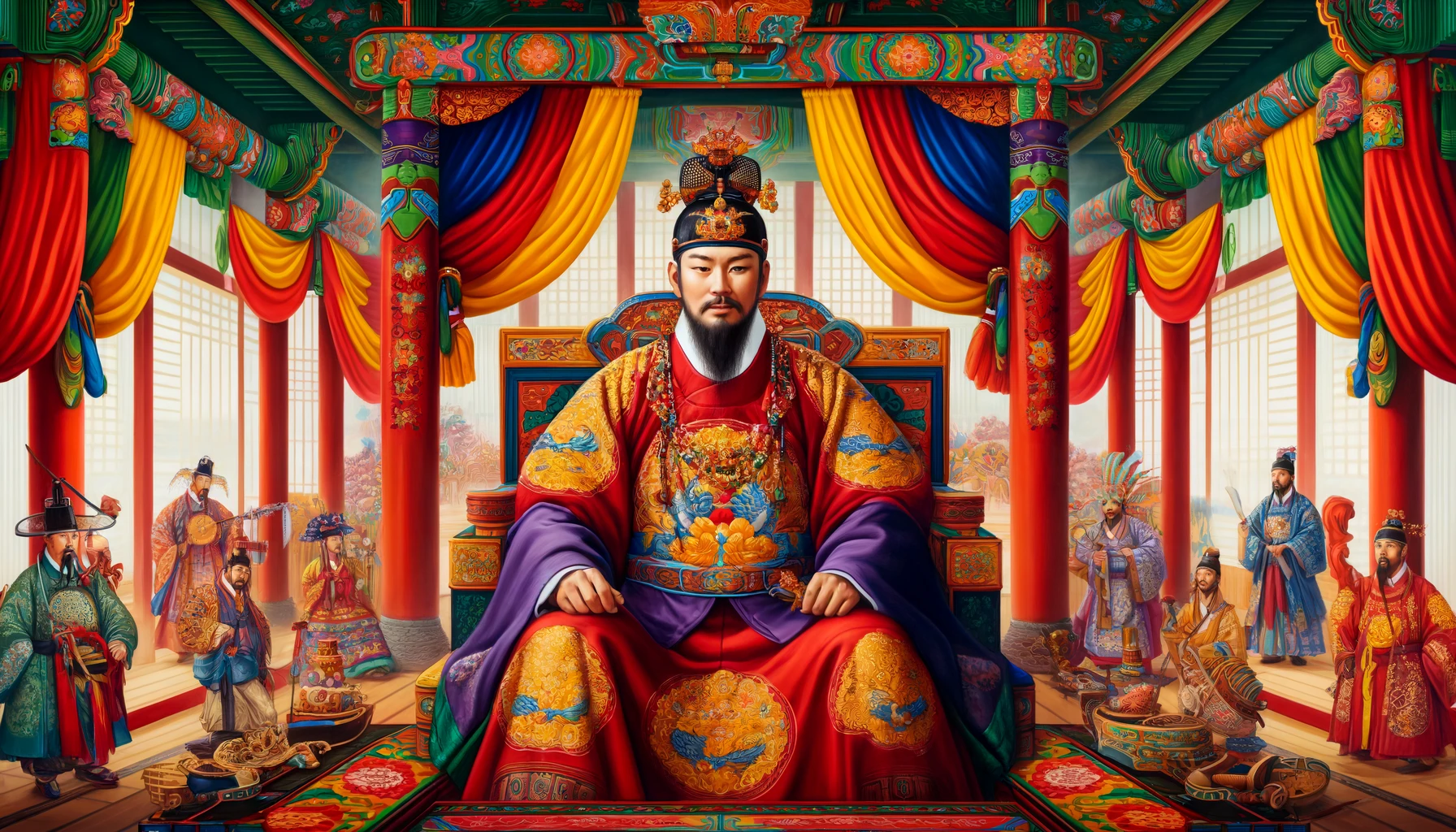 An image of King Tejo of Goryeo Kingdom sitting on his throne
An image of King Tejo of Goryeo Kingdom sitting on his throneKing Tejo of Goryeo Kingdom
Korean history is rich with influential figures, and one of the most prominent among them is King Tejo, also known as Taejo of Goryeo.
His reign marked a turning point in Korean history, as he united the various kingdoms of the Korean peninsula and established a stable and prosperous dynasty that lasted for centuries.
King Tejo was also an important patron of Buddhism and the arts, and his contributions helped to shape Korean culture.
We will explore the life, achievements, and legacy of King Tejo and examine his significance in Korean history.
I. Introduction
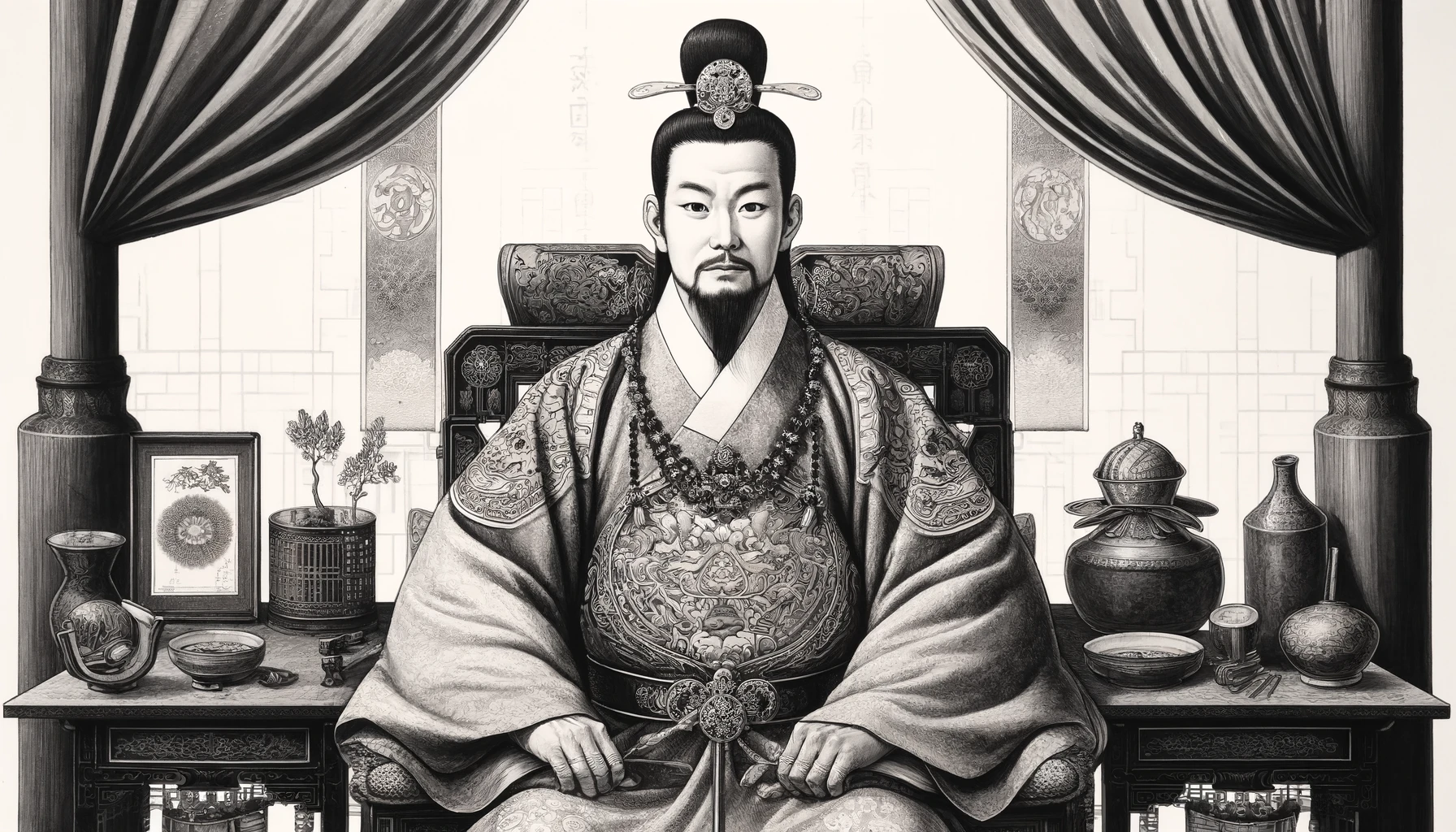 An image in ink and brush of King Tejo of Goryeo Kingdom
An image in ink and brush of King Tejo of Goryeo KingdomKing Tejo, also known as Taejo of Goryeo, founded the Goryeo Dynasty in Korea. He was born Wang Geon in 877, and his reign lasted from 918 to 943.
He is widely regarded as one of the most influential figures in Korean history, and his legacy is still celebrated today.
King Tejo's reign marked a turning point in Korean history. He united the various kingdoms of the Korean peninsula and established a stable and prosperous dynasty that lasted for centuries.
He was also an important patron of Buddhism and the arts, and his contributions helped to shape Korean culture.
II. Early Life and Rise to Power
King Tejo was born into a noble family in the kingdom of Silla. His father was a military leader, and King Tejo was raised in a military environment.
He received a rigorous education in Confucianism and military strategy, preparing him for his future leadership role.
King Tejo came to power after long political turmoil in Korea. He united the various kingdoms under his leadership and established a new dynasty called Goryeo.
He was a skilled military leader and diplomat, and his reign was marked by stability and prosperity.
During his early reign, King Tejo faced several challenges. He had to deal with rebellious factions and border disputes with neighboring kingdoms.
However, he overcame these challenges through military prowess and diplomacy.
His most significant triumph was the unification of the Korean peninsula, which paved the way for a new era of prosperity and cultural development.
III. Military Prowess & Diplomatic Skills
King Tejo of Goryeo Kingdom was a skilled military leader who led several successful campaigns during his reign. He defeated rebellious factions and suppressed border disputes with neighboring kingdoms.
His most significant military achievement was the conquest of the kingdom of Later Baekje, which helped to cement his position as the ruler of the Korean peninsula.
King Tejo was also a skilled diplomat who was able to establish alliances and diplomatic relations with neighboring kingdoms.
He negotiated peace treaties and trade agreements that helped strengthen Goryeo's economy. His diplomatic skills were a crucial factor in his success as a ruler.
King Tejo's military and diplomatic achievements were instrumental in unifying the Korean peninsula.
He brought together the various kingdoms of Korea under his leadership and established a stable and prosperous dynasty that lasted for centuries.
His contributions to the unification of Korea are still celebrated today.
IV. Promotion of Buddhism & Cultural Contributions
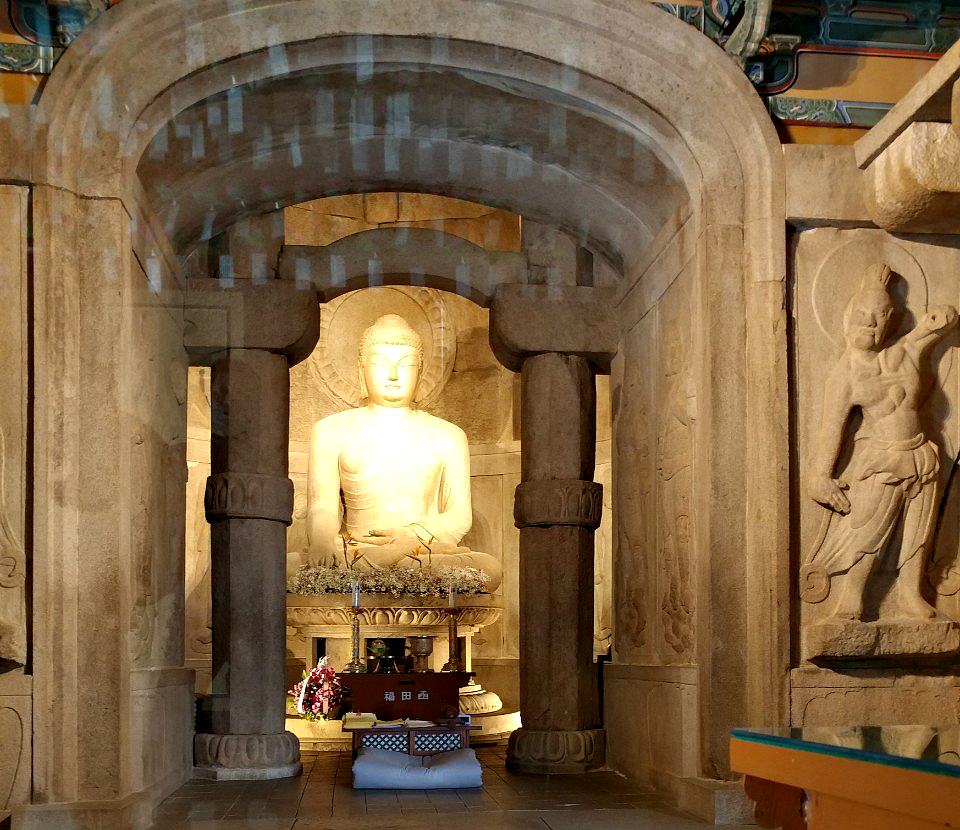 Seokguram Grotto in Gyeongju City
Seokguram Grotto in Gyeongju CityKing Tejo of Goryeo Kingdom strongly supported Buddhism and played an essential role in its Introduction and spread in Korea.
He ordered the construction of several Buddhist temples and sponsored the translation of Buddhist texts into Korean. His patronage of Buddhism helped to promote the religion and spread its influence throughout Korea.
In addition to sponsoring the construction of Buddhist temples, King Tejo supported the creation of Buddhist art and architecture.
He commissioned the construction of several important Buddhist monuments, including the Seokguram Grotto and Bulguksa Temple. These monuments are still considered among Korea's most important cultural treasures.
King Tejo was also a patron of the arts, and his reign saw a flourishing of Korean culture. He supported the creation of...
- literature,
- music, and
- dance and encouraged the development of new artistic styles.
His contributions to Korean culture helped to shape the country's identity and are still celebrated today.
V. Legacy and Impact
King Tejo's reign continues to be relevant in modern times. His contributions to the unification of Korea, his support of Buddhism and the arts, and his diplomatic and military achievements are still celebrated today.
His legacy is a source of Korean national pride, and his reign is seen as a golden age in Korean history.
King Tejo is often compared to other influential Korean rulers, such as King Sejong and Admiral Yi Sun-sin.
While these figures significantly contributed to Korean history, King Tejo's achievements in unifying the Korean peninsula and promoting Buddhism and the arts are unique and enduring.
King Tejo's contributions to Korean history are numerous and significant. He unified the Korean peninsula and established a stable and prosperous dynasty for centuries.
He also strongly supported Buddhism and the arts, and his contributions helped shape Korean culture.
His legacy continues to be celebrated today, and he is widely regarded as one of the most influential figures in Korean history.
Conclusion
King Tejo was born into a noble family in the kingdom of Silla. He rose to power after a long period of political turmoil and united the various kingdoms of Korea under his leadership.
He was a skilled military leader and diplomat, and his reign was marked by stability and prosperity. He was also a strong supporter of Buddhism and the arts, and his contributions helped to shape Korean culture.
King Tejo's legacy continues to be celebrated today, and his reign is seen as a golden age in Korean history.
His contributions to the unification of Korea, his support of Buddhism and the arts, and his diplomatic and military achievements are still relevant in modern times.
He is widely regarded as one of the most influential figures in Korean history, and his legacy continues to inspire and influence Koreans today.
- Home
- Historical Attractions
- King Tejo of Goryeo Kingdom
Get Exciting Activities
Book one of our exciting activities today to experience the thrill of a lifetime! Take advantage of this opportunity and secure your spot in advance.
Hotel Map Guide
Find your affordable, accessible, and comfortable hotel in Seoul at Agoda.Com. See the hotel map below...
Hotel Booking Guide
Find affordable and amazing hotels on Agoda.com using the search box below. Book now to enjoy great discounts and save!
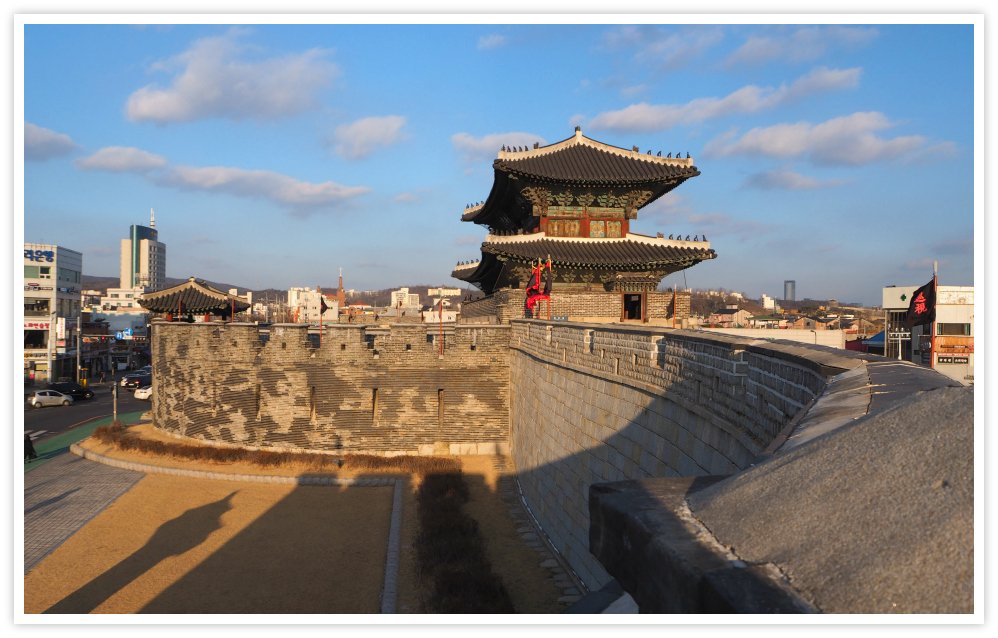
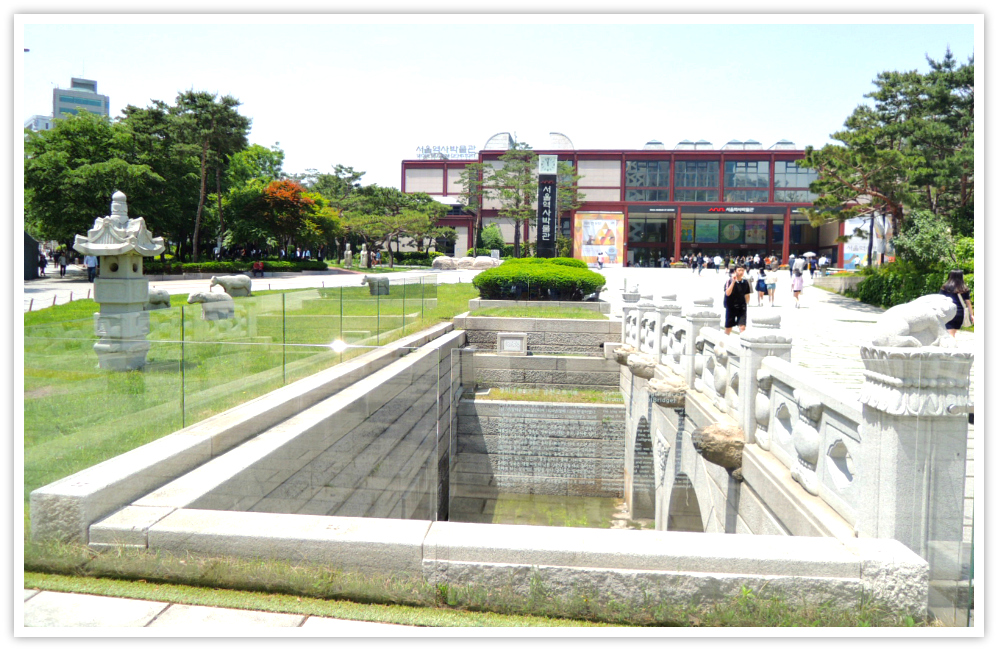
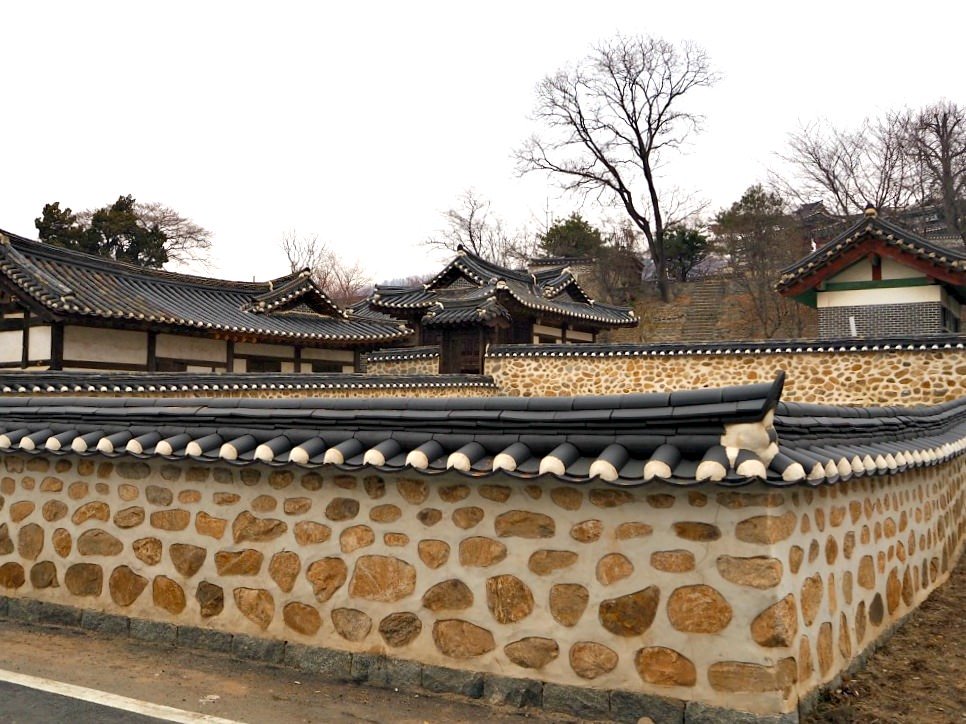




New! Comments
What do you think about this page? Leave me a comment in the box below.